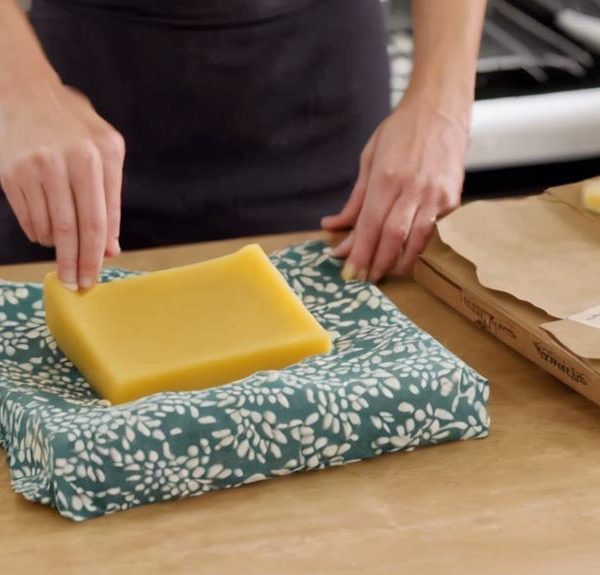Wondering if beeswax is a secret weapon for your hardwood floors? Dive into the benefits and drawbacks of this natural, centuries-old conditioner.
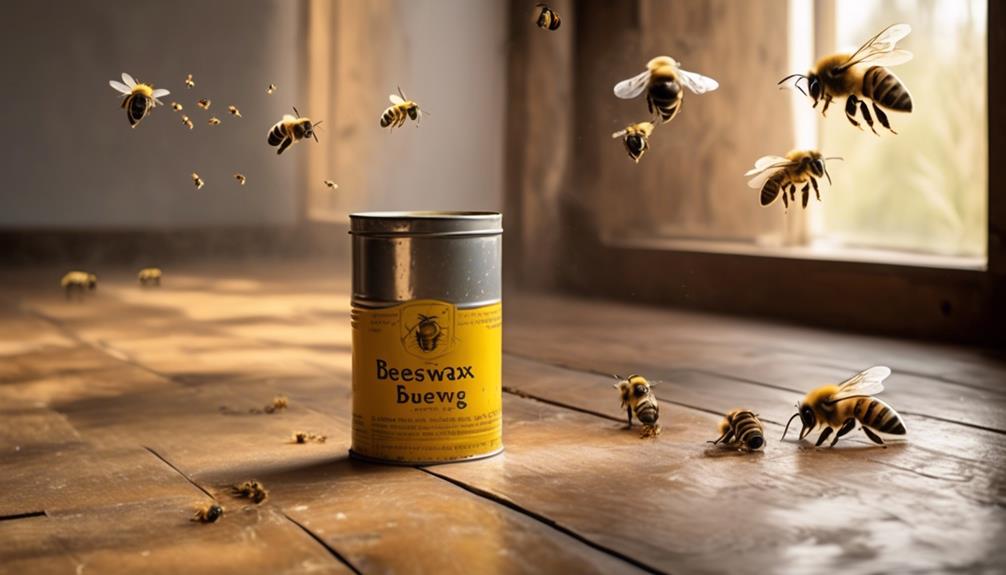
Can You Use Beeswax on Floors?
You've probably never thought of beeswax as more than just a key ingredient in your favorite lip balm or candles. However, this versatile product has been used for centuries in woodworking, thanks to its conditioning and protective properties.
It's particularly interesting to explore its little-known potential for floor maintenance. So, could you, like those craftsmen of old, employ beeswax to spruce up your hardwood floors? The answer is more nuanced than you might think, and as you delve into the pros and cons, you'll uncover potential opportunities to both preserve your flooring and enhance its natural beauty.
Key Takeaways
- Beeswax is a natural sealant that protects wood floors from moisture and wear.
- It enhances the natural beauty of floors, giving them a soft, warm glow.
- Beeswax forms a solid, durable layer on floors, protecting them against scratches and water damage.
- Regular reapplication of beeswax is necessary to maintain its protective qualities.
Understanding Beeswax Properties
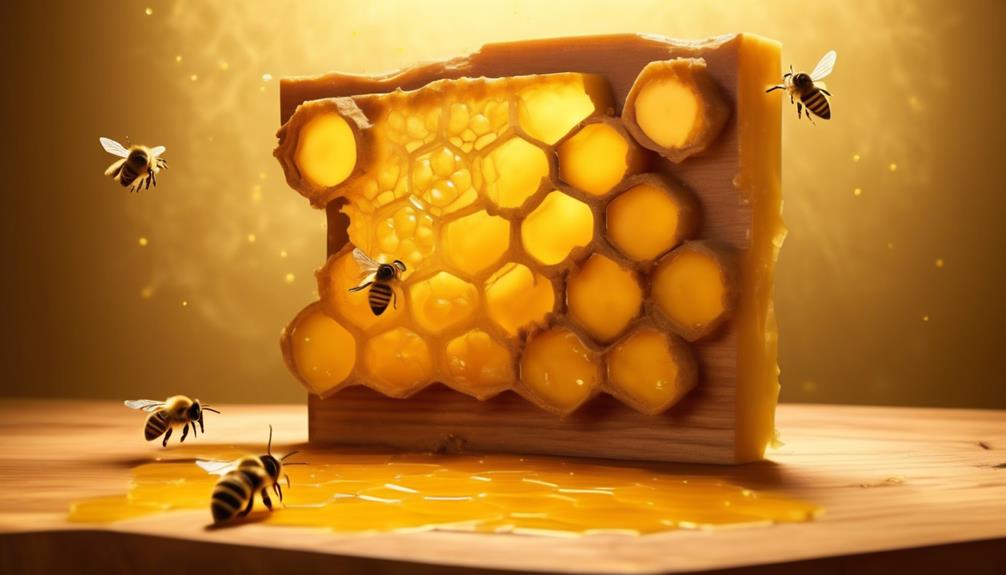
To truly appreciate the benefits of using beeswax on your floors, you need to understand its unique properties. Beeswax is a natural wax produced by honey bees, and it's been used for centuries in a multitude of applications, from candle making to cosmetics. Now, let's dive into why it's great for your floors.
Firstly, beeswax is a natural sealant. It penetrates into the wood, nourishing the fibers and protecting them from moisture and wear. That's why it's often found in high-quality furniture polishes. It's also non-toxic, making it safe for your home and family.
Secondly, beeswax enhances the natural beauty of your floors. It gives them a soft, warm glow that synthetic waxes can't replicate. It's not flashy, but rather, it enhances what's already there, highlighting the grain and character of your wood.
Lastly, beeswax is sustainable. It's a renewable resource, produced by bees as a byproduct of their honey-making process. Plus, it doesn't contain any harsh chemicals found in many synthetic alternatives.
Benefits of Beeswax on Floors

Having grasped the nature of beeswax, let's now explore the multitude of benefits it offers when used on your floors.
Beeswax is renowned for its protective properties. When applied, it forms a solid, durable layer on your floor, defending it against scratches and everyday wear and tear. This seal also repels water, reducing the risk of water damage or warping.
But that's not all. Beeswax doesn't just protect your floor; it enhances it. The wax imparts a warm, soft glow to the wood, preserving its natural beauty while adding a subtle sheen. Unlike synthetic finishes, beeswax doesn't create a plastic-like barrier but lets the wood's intrinsic character shine through.
Beeswax is also safe and natural. You won't have to worry about harmful chemicals or toxins potentially impacting your family's health. It's easy to apply, too. You simply rub it in, allow it to penetrate, then buff it out. No special tools or skills are required.
Moreover, beeswax is a sustainable choice. It's a renewable resource, helping to reduce the environmental impact of your home maintenance.
Potential Drawbacks to Consider
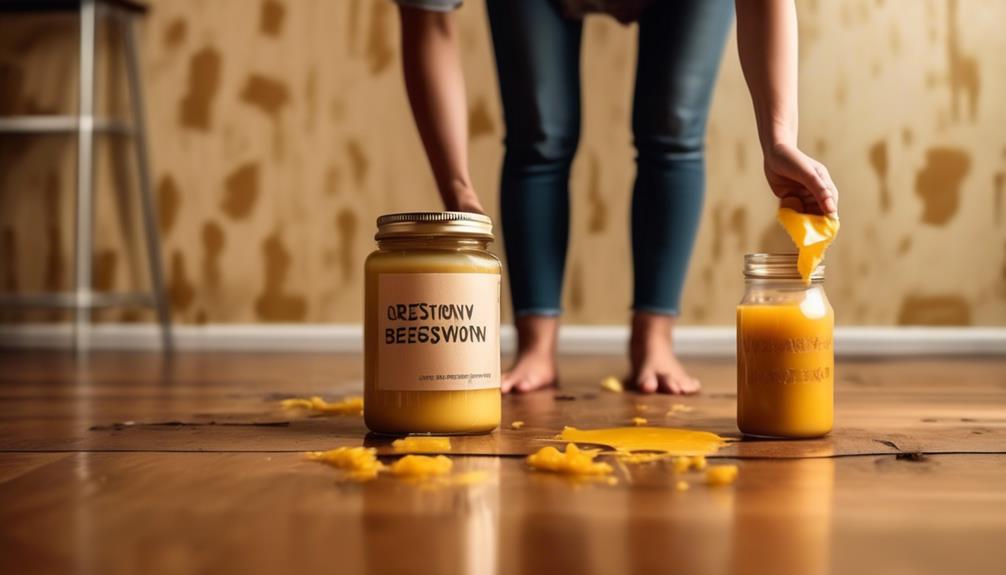
While beeswax offers a plethora of benefits for your floors, it's essential to consider a few potential drawbacks before you dive into this natural approach. It's not a one-size-fits-all solution. For instance, beeswax doesn't fare well with high humidity and damp conditions. Over time, the wax can become cloudy or develop a sticky residue, which can attract dirt and grime.
Another possible downside is the effort required for application. Beeswax needs to be reapplied periodically to maintain its protective qualities. This process is labor-intensive, requiring a thorough cleaning before each application. If you're seeking a low-maintenance floor finish, beeswax mightn't be your first choice.
A further consideration is the cost. While it's a natural and eco-friendly option, beeswax can be quite pricey compared to synthetic alternatives. If you're operating on a tight budget, it's worth considering whether the cost outweighs the benefits.
Lastly, beeswax mightn't be compatible with all types of floor materials. For instance, it's not typically recommended for use on laminates or vinyl flooring, as it can create a slippery surface and potential safety risks. Therefore, it's crucial to check its compatibility with your specific flooring before application.
Step-by-step Beeswax Application Guide
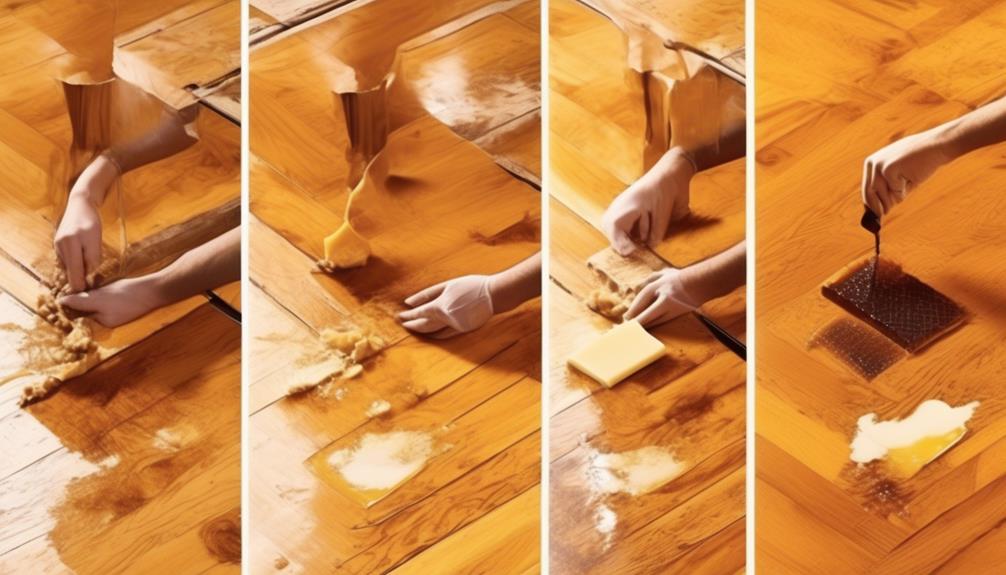
Armed with the knowledge of potential drawbacks, let's delve into the step-by-step guide on how to successfully apply beeswax to your floors for a natural and lustrous finish.
Firstly, ensure your floor is clean and dry. No dirt or moisture should interfere with the wax application.
Next, you'll need to melt the beeswax until it's a liquid consistency. Be cautious during this step, as overheating can cause the wax to lose its beneficial properties.
Once melted, mix the beeswax with a natural oil such as linseed or jojoba. This concoction will help the wax spread more easily and penetrate deeply into the wood. A ratio of one part beeswax to three parts oil generally works well.
Now, it's time for application. Using a soft cloth, apply the mixture to the floor in a circular motion, ensuring you cover every inch.
Let it sit for at least 20 minutes, then buff the floor using a clean, dry cloth until it shines.
Maintaining Beeswax-Treated Floors

Once you've applied the beeswax mixture and buffed your floor to a beautiful shine, it's crucial to understand how to maintain this natural finish effectively.
Regular and careful cleaning is your first line of defense against wear and tear. Sweep or vacuum frequently to remove dust and grit that can scratch the waxed surface.
When it comes to mopping, use a damp, not soaking, mop. Overly wet mopping can cause water to seep into the wax and wood, leading to damage. You should use a gentle, pH-balanced cleaner that's specifically designed for waxed floors. Avoid harsh chemicals or abrasive cleaners as they can strip the wax and dull the finish.
If you notice the shine starting to fade, it's time to reapply the beeswax. You don't need to strip the old wax; just clean the surface thoroughly and apply a fresh coat. Remember, less is more. A thin layer of beeswax will give you a hard, durable finish that's easier to maintain.
With proper care, a beeswax-treated floor can last for years, offering you a beautiful, natural look that's truly timeless.
Frequently Asked Questions
What Other Surfaces Can Beeswax Be Used on Besides Floors?
Absolutely!
Beeswax isn't just for floors. You can apply it on other surfaces like furniture, cutting boards, and leather goods to protect and shine them. It's also great for sealing and preserving wooden utensils and bowls. Just remember, always test it on a small area first.
If you're into crafting, you can use beeswax in candle and soap making too.
How Often Should I Reapply Beeswax on My Floor?
Reapplying beeswax on your floor depends on the traffic and wear it receives. For high traffic areas, you'll likely need to reapply every 6 months. Less frequented areas can go up to a year. Remember, it's not just about time, it's about wear.
Keep an eye on the finish. If it's looking dull or scuffed, it's time to reapply. Always apply in thin layers, buffing between applications. Your floor will thank you!
Is There a Specific Type of Beeswax Best for Floor Applications?
Yes, there's a specific type of beeswax best for floor applications. You'll want to opt for a high-quality, pure beeswax. It's important to avoid beeswax blends as they can contain other waxes that may not provide the same level of protection.
Also, go for a beeswax that's been processed as little as possible to maintain its natural properties. However, remember to always do a patch test first to ensure it's compatible with your floor material.
Can Beeswax Be Mixed With Other Substances for Better Results?
Yes, you can mix beeswax with other substances for improved results. For example, combining it with mineral oil or linseed oil enhances its protective qualities and adds a nice sheen. You'll also find it easier to apply.
Are There Any Alternatives to Beeswax That Can Give Similar Results on Floors?
Absolutely, if you're looking for alternatives to beeswax for your floors, there are several options.
Carnauba wax is a popular choice, known for its durability and glossy finish.
Tung oil is another option that penetrates deep into the wood, enhancing its natural beauty.
You can also use linseed oil, which is easy to apply and gives a warm, rich finish.
It's all about finding what works best for your specific flooring.
Conclusion
In conclusion, using beeswax on your floors can deliver a multitude of benefits, including added durability and a natural, attractive finish.
While there might be some drawbacks, they're easily outweighed by the positives. Just remember to follow the application guide precisely and maintain your beeswax-treated floors properly.
With the right care, you'll enjoy the richness and warmth of your beeswax-treated floors for many years to come.


